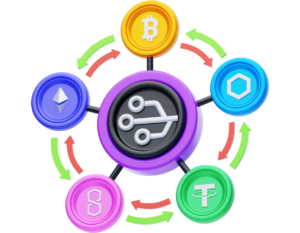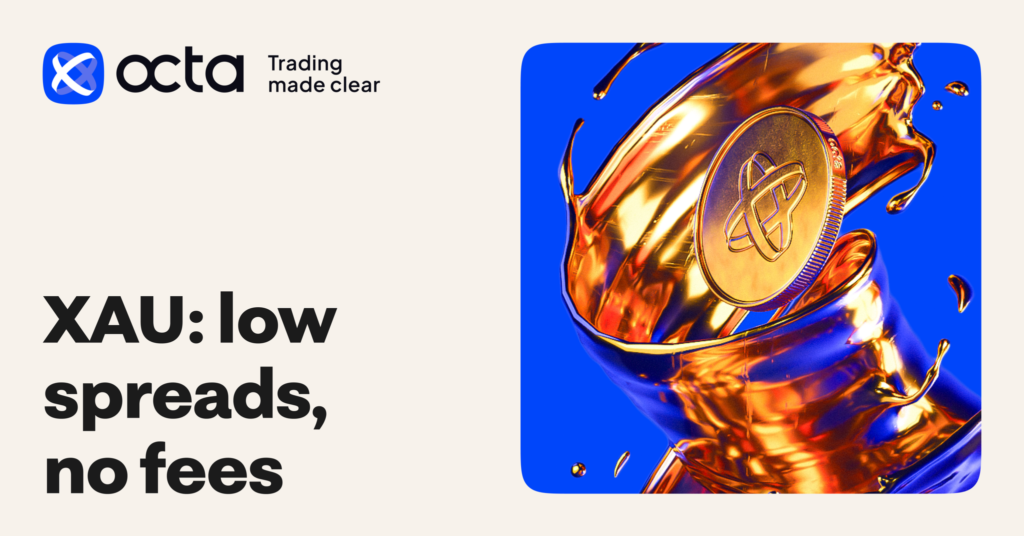Why Traders Struggle for Years Before Becoming Profitable
“Most successful traders have walked this exact road. Some have blown multiple accounts. Some have quit and come back. Some have cried in front of their screens. The market doesn’t reward effort or intention—it rewards mastery, patience, and control.”
Table Of Contents

New to forex?
Learn how to trade forex with our PhD membership, it is the complete beginner’s guide to forex trading.

Become a diamiond trader
Cut through the noise to find the exact diamond techniques one top 1% traders know about.

New to crypto?
Skip the hype and plug into the exact strategies smart traders use to build wealth in digital assets.
Introduction
The Myth of “Quick Success” in Trading
For many new traders, the idea of trading success comes wrapped in glossy social media posts: screenshots of five-figure profits, luxury cars, poolside laptops, and bold captions like “I made this in one day.” It’s intoxicating. And it’s dangerous.
This myth—the idea that trading is a shortcut to wealth—has lured thousands into the markets with false expectations. People come in thinking all they need is the right signals, the right course, or the right broker. They imagine quitting their job in six months, turning $100 into $10,000, or doubling accounts weekly like the influencers show.
But that fantasy doesn’t just set traders up to fail—it sets them up to suffer.
Because when the reality hits—that trading is not easy, not fast, and not always fair—the emotional crash is brutal. They don’t just lose money… they lose trust in themselves. They don’t just burn accounts… they burn hope.
The truth?
Trading is not a game.
It’s not a get-rich-quick scheme.
It’s a high-performance skill—one of the hardest to master.
Why This Is One of the Most Misunderstood Skills on Earth
Most people don’t realize that trading requires the same kind of mastery as elite sports, high-level chess, or operating a business at scale. But there’s a twist: you’re your own worst enemy in this arena.
Unlike other professions, you don’t just battle the charts—you battle yourself:
Your emotions sabotage logical decisions.
Your ego refuses to admit when you’re wrong.
Your impatience pushes you into bad trades.
Your need for certainty makes you over-analyze and freeze.
To be a profitable trader, you need to develop qualities that go directly against human nature: patience, emotional detachment, statistical thinking, and deep discipline. And that makes trading a very rare skill—not just misunderstood, but underestimated.
People think it’s about buying low and selling high. But it’s about mastering chaos while staying calm. It’s about knowing when not to act. And it’s about being okay with losing—consistently—while staying focused on long-term probability.
It’s not just hard because of the market. It’s hard because it forces you to confront your deepest flaws and habits—day after day, trade after trade.
The Real Cost of Becoming Profitable: Emotional, Financial, and Mental
The price of becoming a consistently profitable trader isn’t paid in dollars alone—it’s paid in sleepless nights, identity crises, and the gut-wrenching feeling of “maybe I’m just not cut out for this.”
Here’s the real toll trading takes on most people:
Emotionally: You experience cycles of hope and despair. A great trading day lifts your spirit. A blown account crushes your soul. The emotional whiplash is constant, especially when you link your self-worth to your results.
Financially: Nearly every trader pays tuition to the market in the form of losses—sometimes thousands of dollars—before they ever find consistency. The costs add up: trading capital, courses, signal groups, software, and time off work to “focus” on trading.
Mentally: It’s hard to stay sharp when your mind is constantly looping over past trades, what you “should’ve done,” or what you fear will happen next. Over time, poor trading can lead to stress, burnout, self-doubt, and even depression if unchecked.
And yet—this is normal.
Most successful traders have walked this exact road. Some have blown multiple accounts. Some have quit and come back. Some have cried in front of their screens. The market doesn’t reward effort or intention—it rewards mastery, patience, and control.
That’s why this journey isn’t just financial. It’s transformational.
Becoming a profitable trader means becoming a different version of yourself—calmer, more disciplined, more self-aware. It’s less about finding the right indicator and more about reprogramming the very way you think and feel.
And that’s the part no one advertises.
The Deep-Rooted Pain Points
Identity Crisis: Why Smart People Lose in Trading
Imagine this: You’re the one friends come to for advice. You’ve excelled academically or professionally. You’ve read dozens of books, understand macroeconomics, and maybe even code. You’re not reckless.
So, when you enter the trading world, you assume you’ll figure it out quickly. You’re not the average gambler. You’re calculated. You’re ready.
Then the market punches you in the face.
You take well-thought-out trades—still lose. You follow a system—still lose. You tweak your strategy—lose again. And suddenly, you’re not just losing money—you’re losing your identity.
“How can I be good at so many things… and still be bad at this?”
The shame creeps in. Confidence dies. You begin to question your intelligence, your decision-making, even your worth. And worst of all? You don’t tell anyone. Because deep down, you fear they won’t understand.
Account Blow-Ups: The Cycle of Hope and Destruction
You deposit $500. You tell yourself this time will be different. You’ve studied. You’ve journaled. You’ve set risk rules.
Then the market starts to move in your favor. A few wins. Confidence grows. You increase your lot size. You break a rule—just once. Then the market turns.
Now you’re trying to “get it back.” Revenge trades. Over-leverage. Ignore stop loss. You know better—but something snaps. And by the end of the day… the account is gone.
Again!
This becomes a cycle:
Hope → Wins → Greed → Losses → Panic → Destruction → Regret
And each time it happens, it doesn’t just drain your capital—it drains your spirit. You start to wonder if you’re broken. If maybe you’re just not cut out for this.
But here’s the dark truth: blowing accounts is a rite of passage for many traders. Not because it’s necessary—but because most traders don’t know how to control the one thing that matters most: themselves.
Strategy, Confusion and Paralysis
You’ve tried indicators. Then price action. You tried a paid course. It worked—for a while. Then losses came. You switched. That worked. Until it didn’t.
Now you’re stuck.
You don’t trust any method fully. You second-guess every entry. You see too many possibilities on the chart and freeze. Or worse—you see a valid setup, but don’t take it. Then it plays out perfectly and the regret eats you alive.
“If I had just trusted my plan…”
But you don’t have a plan anymore—just fragments of systems, advice from gurus, and half-written notes from YouTube videos.
You’re not trading. You’re reacting. And it’s exhausting.
This strategy paralysis destroys consistency. And without consistency, there’s no feedback loop—no way to truly learn. You’re stuck in permanent beginner mode, even after months or years.
Isolation and Lack of Support
No one really gets it.
Your spouse or partner thinks you’re addicted. Your friends think you’re gambling. Your family asks, “Have you made money yet?”—not realizing that question cuts like a knife.
You try to explain:
That this is a skill.
That it takes time.
That you’re doing everything you can.
But they don’t understand. And eventually, you stop trying to explain.
You keep your struggles to yourself. You trade in silence. Lose in silence. Learn in silence.
You start to feel like the only one who hasn’t figured it out yet. Everyone on Instagram is “killing it.” But you? You’re stuck, alone, drowning in doubt.
This loneliness is one of the most dangerous parts of trading. It amplifies every mistake and magnifies every loss. Without support or community, even the strongest minds can fracture.
The Silent Agony of Not Knowing When It Will Click
You’ve been grinding for months. Maybe years.
You’ve sacrificed sleep, social life, and even sanity at times. You’ve studied hundreds of hours. Traded thousands of candles. Watch patterns until your eyes burn. And still, you’re not profitable.
“How much longer do I have to suffer before it works?”
This is the worst part: There’s no guarantee.
No one tells you when it’ll click. No boss gives you a promotion. No certificate tells you you’re ready. You just keep showing up—hoping this is the week, the month, the year.
It feels like building a bridge in the dark, plank by plank… not knowing how close you are to the other side. Some days, it feels like you’re getting nowhere. Others, it feels like you’re going backwards.
And yet—something in you refuses to quit.
Because despite all the pain, all the losses, and all the silence… you still believe.
You believe that if you just keep pushing, if you just learn that one more thing, everything will change.
And that belief, fragile as it is, is what keeps you in the game.
The Hidden Enemies of Consistency
Trading success is not just about mastering the market—it’s about mastering yourself. What makes that so difficult isn’t just the charts or the economic data. It’s the invisible enemies inside your own mind—silent saboteurs that quietly destroy your progress day after day.
Let’s expose them.
Unconscious Sabotage: Our Brains Are Wired to Lose Money
Most traders don’t fail because they’re stupid. They fail because they’re human.
The human brain evolved for survival—not speculation. We’re wired to avoid pain, seek pleasure, and respond to danger with emotion, not logic. But in trading, those instincts become traps.
You hold losing trades because the pain of loss is unbearable.
You exit winners too early because you fear it might reverse.
You avoid pulling the trigger on good trades because uncertainty feels unsafe.
These are not “bad habits.” These are survival instincts misfiring in the wrong environment.
In fact, a famous study in behavioral finance found that the pain of losing $100 is twice as strong as the pleasure of gaining it. This is why traders break rules even when they know better. It’s not stupidity—it’s biology.
Until you become conscious of how your brain is working against you, you’ll unconsciously sabotage your trades… over and over again.
Addiction to Dopamine: The “Thrill” of Instant Gratification
Most traders don’t realize it, but they’re not addicted to trading—they’re addicted to uncertainty.
Every click of the mouse, every chart refresh, every candle forming—it’s a hit of dopamine. The same chemical-released in gambling, video games, and drugs. It’s not the money that hooks you—it’s the rush.
And here’s the trap:
This addiction rewards impulsive behavior and punishes patience.
You scalp even when your strategy is swing-based.
You overtrade because waiting is boring.
You break your rules just to feel in the game again.
You trade to feel something—not to follow something.
This creates a dangerous loop where your emotions start driving your trades. You’re no longer a trader—you’re a thrill-seeker with a brokerage account. And every “rush trade” chips away at your consistency.
Perfectionism: The Toxic Need to Be Right
You want to win. That’s natural.
But in trading, the desire to “always be right” is one of the fastest ways to fail. The market doesn’t reward accuracy—it rewards probability and risk control.
Perfectionists struggle with this deeply. Every loss feels like a personal failure. Every missed entry feels like a disaster. Every mistake feels like a reflection of who you are—not what the market did.
You didn’t just lose a trade. You “messed up.”
You didn’t just misread the market. You “should’ve known better.”
This creates analysis paralysis, emotional revenge trading, and worst of all—burnout.
You need to understand:
You will be wrong. Often!
And that’s okay.
Consistency comes not from being perfect—but from being forgiving, adaptive, and statistical.
Lack of Emotional Regulation: Reacting Instead of Executing
You had a plan. But then the market spiked.
You panicked and closed early. Or added to a loser. Or took a random trade just to make back what you lost yesterday. Sound familiar?
This is what happens when emotion takes the wheel. Your logical mind shuts down, and your reactive self takes over. In these moments, you’re not trading a strategy—you’re reacting to fear, greed, and frustration.
The biggest lies you’ll tell yourself happen in emotional states:
“I’ll just increase the lot size this once.”
“It’s definitely going to reverse now.”
“Let me take one more trade to end the day green.”
These decisions feel urgent. But urgency is not part of a consistent trader’s vocabulary.
Until you learn to pause, breathe, and detach from outcomes, you will continue to make decisions that sabotage long-term success.
Chasing Strategy After Strategy: Why Nothing Seems to Work
You tried smart money concepts. Then you switched to scalping. Then Fibonacci. Then supply and demand. Then indicators. And now you’re looking at order flow. Again.
Each time you lose a few trades in a row, you assume the strategy is broken. You throw it out and go searching for the next holy grail.
But here’s the raw truth: “It’s not the strategy that’s failing. It’s your inability to stick with it long enough to master it.”
Almost any strategy with a positive edge can become profitable with discipline, proper risk management, and time. But most traders never get past the 10-trade mark before jumping ship.
This constant switching resets your learning curve again and again. You never get feedback. You never grow. You stay stuck in the early frustration phase—forever chasing, never trusting.
These hidden enemies are not always obvious. They don’t show up in your trading journal. But they do show up in your results.
Consistency doesn’t come from more knowledge. It comes from fighting these inner battles—and winning.
Only when you master your impulses, retrain your brain, and commit to one path with emotional clarity does profitability begin to emerge—not as an event, but as a byproduct of who you’ve become.
The Harsh Truth: Why Time Alone Doesn’t Make You Better
There’s a painful lie that traps most traders for years: “If I just keep going, I’ll eventually figure it out.”
It feels hopeful. It feels logical. But it’s a trap.
In almost no other high-performance skill—sports, medicine, music, engineering—do we believe that just showing up leads to mastery? Yet in trading, people equate screen time with skill, months with maturity, and calendar years with competence.
Here’s the truth:
You can trade for five years and still be stuck in year one.
Because time doesn’t grow you—deliberate, intentional practice does.
Let’s break it down.
Experience vs. Deliberate Practice
There’s a massive difference between experience and growth.
Experience is passive. It’s just being around. Deliberate practice is active. It’s structured. It hurts. It requires reflection, correction, and repetition.
Many traders open their charts each day, place some trades, hope for the best, and call that “grinding.” They measure their progress by how long they’ve been in the game—how many hours they’ve logged on MetaTrader or TradingView.
But that’s like saying playing pick-up basketball every weekend makes you NBA-ready.
If you’re not tracking, analyzing, reviewing, adjusting—with intensity and intent—you’re not improving. You’re just reinforcing your current level of dysfunction.
Real progress looks like:
Studying your losing trades more than your winning ones.
Journaling your emotions during trades and identifying behavioral loops.
Practicing one setup with microscopic focus until it’s automatic.
Getting feedback—even if it’s uncomfortable.
Working on yourself, not just the charts.
Without this level of effort, five years of trading is just one year repeated five times.
False Confidence from “Lucky Wins”
Every trader has experienced it.
You catch a great run—maybe your first big trade. Maybe it was NFP. Maybe it was luck. But suddenly, you feel like you’ve got it.
You double your account. You feel unstoppable. You even give advice to others.
Then the losses come. Fast. Merciless. You give it all back and more.
This cycle of false peaks is devastating because it breeds overconfidence without understanding.
You think you’re consistent… until the market shifts. You think you’re skilled… but you were just aligned with a temporary market condition. You feel validated by results—but have no process to recreate them.
Luck without structure creates ego. Ego without awareness leads to destruction.
This is why traders go from euphoria to despair within weeks. Because their wins weren’t earned—they were emotional spikes dressed up as progress.
Repeating the Same Year of Mistakes Five Times
Here’s one of the most depressing truths in trading:
Most traders don’t evolve—they loop.
They keep blowing accounts.
They keep changing strategies.
They keep making the same emotional decisions.
But because they’re “still trading,” they feel like they’re progressing. It’s a dangerous illusion. Like running on a treadmill for five years and wondering why you’re not in a new country.
The difference-maker? Reflection. Structure. Feedback.
If you’re not learning from your mistakes, you’re doomed to relive them.
And the worst part?
Over time, you stop believing that change is possible.
You begin to identify with the struggle: “Maybe I’m just not cut out for this.”
No. You’re just stuck in a loop. And loops feel like prisons when there’s no intentional exit.
The Dunning-Kruger Effect in Trading
If you’ve never heard of it, the Dunning-Kruger effect is a psychological phenomenon where people with low ability overestimate their competence—while those with high ability often underestimate theirs.
In trading, it looks like this:
Beginner phase: “I watched 5 YouTube videos, I understand candlesticks, I got this!”
Year 1: “Wait… this is harder than I thought.
Year 2-3: “Why does nothing seem to work? What’s wrong with me?”
Beyond: “I’ve been humbled. Now I focus on risk, discipline, and edge—not excitement.”
The cruel irony is this:
When you know just a little, you feel powerful. When you finally start learning deeply, you feel lost. But when you keep going despite the confusion, that’s when growth begins.
So many traders quit when they finally become aware of how much they don’t know. That discomfort is actually a sign that you’re finally on the path to true competence.
The Realization That Sets You Free
Time is not your savior. Discipline is. Structure is. Emotional control is.
You can spend 10,000 hours in front of the screen and still fail—if you’re repeating emotional patterns and poor habits.
But even one year of focused, honest, deliberate practice can transform your edge.
The moment you stop waiting for time to fix it—and start treating trading like a skill to be mastered with humility and precision—you escape the loop.
And that’s when the real journey begins.
What Finally Turns the Corner for Most Traders
For most struggling traders, there’s no grand “aha!” moment with fireworks and celebratory profits.
The turning point is often quiet.
It comes in the middle of deep frustration, maybe even after yet another account blowup.
It doesn’t feel like a breakthrough—it feels like surrender. But it’s not giving up.
It’s giving up the illusion of what trading is “supposed” to be.
That’s where real change begins.
The Moment They Take Full Responsibility
This is the true line in the sand.
Before this, every loss has an excuse:
“The news spiked.”
“The broker manipulated price.”
“This strategy just stopped working.”
“I just need more capital…”
But once a trader truly owns every outcome, something fundamental shifts.
Not in ego, but in power.
“That was my overtrading. That was my impulse. That was my lack of a stop-loss. That was me ignoring the plan.”
This kind of radical ownership hurts. It stings.
But it’s also the most liberating thing in the world—because if it’s all your fault, it means it’s also all in your control to fix.
This is when the trader stops being a gambler and starts becoming a professional.
Developing One Clear, Tested, Rule-Based Strategy
The chaotic “strategy buffet” phase ends. No more chasing the newest indicator, flipping between price action, smart money, ICT, or robots like changing outfits.
Instead, the trader decides:
“I will master one setup. One edge. One play.”
This is a painful transition for most, because it means letting go of fantasy—the fantasy that there’s a perfect strategy out there that wins 90% of the time and will make you rich in three months.
There’s no such thing.
But what does exist is:
A setup that gives you a measurable edge.
A defined structure: entry, stop, target, context.
Consistent conditions where you execute without emotion.
You stop trading everything. You start trading only your edge.
You don’t need five strategies.
You need one that fits you—and the courage to stick with it through the chop.
Journaling and Treating Trading Like a Business
At some point, the trader stops approaching trading like a lottery ticket and starts treating it like what it is: a performance business.
They begin to journal—not just trades, but themselves.
What was I feeling when I entered that trade?
Was this within my plan, or did I chase?
How did I manage the trade once in?
What belief caused me to move the stop?
They build metrics:
Win rate. R-multiple. Drawdown. Risk per trade. Equity curve.
They schedule review days. They conduct post-trade audits. They know their numbers like a CEO knows their financials.
Trading is no longer a game. It’s an operation.
And suddenly, emotions lose their grip—because the trader is now a data-driven decision maker, not a reactionary risk addict.
Deep Work on Psychology and Habits
Here’s the truth:
Most traders aren’t struggling with entries or indicators.
They’re struggling with emotional regulation and self-sabotage.
And when things begin to shift, it’s often because they finally do the uncomfortable work:
Building emotional awareness: noticing fear, greed, boredom before acting.
Identifying childhood patterns: perfectionism, need for control, fear of being wrong.
Creating pre-trade rituals to anchor focus.
Implementing breaks and recovery systems to manage fatigue.
Replacing toxic habits—like revenge trading or overleveraging—with intentional, repeatable behaviors.
This is real, personal development. This is shadow work. And trading becomes the mirror that reflects the internal battle most people spend their lives ignoring.
Only those willing to stare into that mirror and change themselves ever truly cross over.
Shifting Focus from Outcome to Process
The final piece is subtle, but transformational.
Before, every trade felt like life or death.
“Did I win or lose?”
“Is this the trade that makes me rich?”
“How long until I’m consistent?”
Now, the question changes:
“Did I follow my plan?”
“Did I execute my edge with discipline?”
“What did I learn from this session?”
This shift—from outcome to process—is what turns a trader from erratic to consistent.
Because outcomes fluctuate. But process? Process you can control. Refine. Repeat.
Once the trader detaches their identity from wins and losses, and attaches it to execution, they stop riding emotional rollercoasters. They start stacking small, consistent wins—mentally and financially.
The Paradox: It All Looks Simpler in the End
Ask any consistently profitable trader what they did to turn the corner, and their answer will sound almost underwhelming:
“I stuck to one setup.”
“I sized down and followed my plan.”
“I worked on my mindset.”
It doesn’t sound magical. It doesn’t sound advanced.
Because mastery always looks simple from the outside—but it takes years of chaos, pain, and self-reconstruction to get there.
The traders who finally break through aren’t the smartest, the flashiest, or the fastest.
They’re the ones who stop searching for shortcuts and start building the foundation with brutal honesty and quiet discipline.
Emotional Maturity: The Real Secret to Profitability
No one tells you this in the beginning.
They’ll say the secret is in the strategy…
The broker…
The tool…
The mentor…
The market condition…
But ask anyone who has survived long enough to cross the bridge into consistency, and they’ll tell you the truth in one sentence:
Profitability is emotional maturity in disguise.
It’s not your edge that fails you. It’s what you do when the edge loses three times in a row. It’s not your plan that breaks. It’s you, mid-trade, when fear whispers that this time is different. This game isn’t about market timing—it’s about emotional timing. Can you stay grounded when everything inside you screams to react?
Let’s break down what emotional maturity in trading actually looks like.
Accepting Losses as Part of the Game
For years, losses feel personal. They sting. They trigger ego. They feel like failure.
You question everything after a red day. You tweak the system. You change timeframes. You blame yourself.
But eventually—after enough cycles of blowing up and rebuilding—you realize:
Losses aren’t problems. They’re data.
Just like a basketball player misses shots. Just like a chess master loses games. Losses aren’t evidence that you suck. They’re part of the statistical fabric of trading—built into the edge.
The mature trader doesn’t try to avoid losses. They expect them. Respect them. Plan for them.
The difference?
Amateurs get emotional over red.
Professionals get curious.
Detaching Self-Worth from Trade Outcomes
This is where many talented, intelligent traders get wrecked.
They come from success. They’re used to winning—academically, professionally, socially.
And now here comes trading—where no one cares about your degree, your GPA, your job title.
You can follow all the rules… and still lose.
You can make a stupid move… and still win.
It messes with your identity.
That’s when emotional maturity becomes essential.
“I am not my P&L.”
“A losing trade does not make me a loser.”
“A winning trade doesn’t make me a genius.”
Your self-worth has to be completely uncoupled from short-term results.
Only then can you show up with clarity.
Only then can you execute without desperation, fear, or ego attachment.
Building Discipline Like a Muscle
Discipline isn’t a gift. It’s not a character trait you either have or don’t. It’s a muscle. And like any muscle, it’s weak at first. It fatigues quickly. But it grows with reps.
Every time you don’t overtrade, that’s a rep.
Every time you take a stop-loss with grace, that’s a rep.
Every time you close the laptop after your planned session, even when tempted to “just take one more,” that’s a rep.
And you know what’s wild?
Discipline doesn’t feel good in the moment.
It feels like restriction. Frustration. Sacrifice.
But after the fact—when you realize you protected your capital and protected your mind—that’s when the pride kicks in.
That’s when confidence compounds. Not from wins. From keeping your word to yourself.
Having Systems in Place for When Emotions Run High
You will have breakdowns. You will hit tilt. You will feel the fire rise in your chest after a loss, the itch to win it back, the temptation to double your risk.
This is not a matter of if, but when.
Emotional maturity doesn’t mean you don’t feel anything. It means you’ve created systems to handle it before it wrecks you.
Hard stops. To override your impulse to move it when price gets close.
Daily max loss limits. So your emotions never spend more than your system allows.
Trading rules printed and visible. To anchor you when your mind goes rogue.
Recovery rituals. Journaling, meditation, walks—whatever resets your nervous system.
Accountability. A trading partner, coach, or even a community to talk you off the ledge.
Think of this like pre-installing a fire alarm and extinguisher. When the fire starts, you don’t have to think. You act from the system. This is what separates long-term survivors from short-lived thrill-seekers.
Emotional Maturity Is the Edge Beneath the Edge
You can have the best strategy in the world. A perfect risk model. Great entries. Top-tier backtests.
But if you panic, self-sabotage, revenge trade, or freeze under pressure, none of it matters.
The edge dies in your hands.
Emotional maturity is the only edge that applies across all markets, all strategies, all conditions.
It’s not glamorous. It’s not flashy. You can’t backtest it or sell it.
But it’s the secret.
And once you build it, something strange happens:
You stop needing the market to validate you.
You stop needing every trade to work.
You stop fearing the next loss.
You become grounded. Focused. Professional.
And finally, the game begins to respect you back.
Practical Steps to Accelerate Your Progress
If you’re still in the trenches—struggling with consistency, flipping between systems, or wondering if you’ll ever make it out—you’re not alone. But here’s the uncomfortable truth:
Most traders aren’t failing because the dream is impossible.
They’re failing because they’re winging it.
There’s no direction. No structure. No feedback loop.
Just a mix of YouTube videos, random trades, and hope.
This section is your roadmap out of that chaos. These are the practical steps that separate the 5% who make it from the 95% who quit—or worse, blow up everything before they even knew what they were doing.
Let’s break it down.
1. Find (or Become) a Mentor
Mentorship is the fastest shortcut to clarity—but it’s not about getting “calls” or hand-holding.
A real mentor:
Shows you how to think, not what to trade.
Helps you identify blind spots.
Speeds up your learning curve by compressing decades into days.
But let’s be honest—most struggling traders aren’t surrounded by pros.
So if you can’t find a mentor?
Become your own.
That means:
Study the accounts of successful traders with discipline and humility.
Audit your own behavior like you’re coaching someone else.
Build a journal that doesn’t just log trades, but diagnoses behavior.
It’s not easy, but the principle is simple:
You don’t need a mentor to start. You need one to refine. But self-leadership is step one.
2. Create a Structured Plan: Education, Strategy, Review
If your trading journey is scattered, it’s no surprise your results are too.
Structure means creating a learning pipeline—just like a student in med school or an athlete in training.
Here’s a powerful framework:
a) Education Phase
Study market basics, chart patterns, risk management, psychology.
Limit this phase—too much theory = paralysis. 2–3 months is more than enough.
b) Strategy Phase
Pick one setup. Just one.
Study it deeply. Backtest it. Forward test it.
Master entry criteria, exit rules, and invalidation.
c) Review Phase
Journal every trade. Every emotion. Every mistake.
Weekly reviews: “What worked? What didn’t? What needs fixing?”
Monthly reports: Metrics like win rate, R-multiple, average drawdown.
Without this feedback loop, your journey becomes a blind cycle of trial and error.
3. Build a Real Trading Framework (Edge + Risk + Mindset)
Consistency doesn’t come from motivation—it comes from systems.
A complete trading framework includes three pillars:
Mindset
Daily routines to prime focus.
Emotional rules: What to do when fear, greed, or tilt creeps in.
Clear detachment between you and your outcomes.
Edge
A statistical advantage proven over hundreds of trades.
One strategy you can execute repeatedly without guessing.
Based on probabilities, not perfection.
Risk
Fixed % risk per trade (usually 0.5% to 2%).
Clear max daily loss limit.
Plans for drawdowns, losing streaks, and psychological recovery.
A trader without a framework is like a pilot flying with no instruments—eventually, they crash.
4. The “Rule of 1000 Trades”: Why Most Quit Too Early
Here’s one of the most underrated truths in trading:
You’re not a trader until you’ve taken 1,000 trades.
Why?
Because in 1,000 trades, you experience:
Every kind of market condition
Multiple losing streaks
FOMO, revenge trades, perfectionism, burnout
Emotional highs and deep self-doubt
It’s not just a number—it’s a rite of passage. It exposes all your weaknesses, and forces you to evolve.
Most quit after 50 trades. Some hang on till 200. Very few make it to 1,000 with proper tracking and emotional awareness.
But those who do?
They stop guessing.
They stop needing luck.
They start operating like a professional.
So commit to the rule:
Don’t evaluate your success before 1,000 trades.
Don’t switch strategies every 50 trades.
Don’t expect mastery before the miles are logged.
Final Thought
There’s no shortcut, but there is a path.
You don’t need 10 years to succeed. But without structure, without feedback, and without emotional commitment—you could spend 10 years stuck in month one.
What accelerates progress isn’t more trading…
It’s more deliberate trading.
Create your plan.
Track your growth.
Stick with one method.
And give it the reps it deserves.
This isn’t about genius. It’s about endurance, clarity, and emotional ownership. Once you treat trading like the professional craft it is—everything starts to change.
Conclusion: You’re Not Alone
If you’ve ever found yourself staring at the screen—sick to your stomach after another bad trade, wondering if maybe you’re just not cut out for this—let this be your reminder:
You’re not alone. And you’re not broken.
What you’re feeling? That pit in your stomach? That rising self-doubt? That deep exhaustion from putting in the hours with nothing to show?
That’s normal.
That’s the cost of learning one of the most unforgiving skills on Earth.
Because trading will break you before it builds you.
It strips away the illusions. It exposes every hidden insecurity. It makes you question your intelligence, your self-worth, even your identity.
But here’s the truth that rarely gets said:
Everyone struggles longer than they admit.
Even the traders you admire—the ones who seem like they’ve had it all figured out for years? They’ve blown accounts. They’ve broken down. They’ve walked away and come back. Most just don’t talk about it.
What separates the ones who make it isn’t talent. It isn’t access to better tools. It isn’t luck.
It’s the willingness to stay in the pain long enough to understand it. Because the pain is the path.
It teaches you what no course can:
- Patience when your edge takes time to play out.
- Discipline when emotions scream at you to act.
- Resilience when everything in you wants to quit.
And if you can survive that—if you can endure the ego death, the losses, the uncertainty—then what’s waiting on the other side isn’t just profit.
It’s emotional strength. It’s clarity under pressure. It’s freedom.
Not the fantasy kind—Lambos, yachts, or luxury watches. But the kind of freedom where your livelihood doesn’t depend on a boss, a schedule, or external validation.
That freedom is built on consistency.
And no—it isn’t sexy. There’s no adrenaline spike from following a checklist. No rush in executing the same setup for the hundredth time.
But it works.
And once it starts working, you’ll never want to trade any other way again.
So if you’re in that dark middle—trading live, bleeding slowly, doubting everything:
Stay with it.
Not for the dream of riches. But for the version of yourself you become on the other side.
Unshakable.
Disciplined.
Free.
You’re not behind. You’re not broken. You’re exactly where you’re supposed to be.
Just don’t stop now!
Get Forex Signals
Free VIP requirements
- Have a Exness live trading account Or sign up
- Min deposit $10
- You’ll receive a link to the group once completed all the steps
- You’ll Get 2-5 signals daily for a week
- For existing exness clients: Go to live chat and type “change partners”
Fill in the form .
Use my Exness account number
– 1046074066718440619
Note: Existing clients must fill in the partner change form
Table Of Contents
The Future: Built in Africa, Not Borrowed
Premium Materclass
Full 1 Year Mentorship on Forex Trading
Professional-level insights with Inner Circle Traders (ICT) strategies, mastering precision trading techniques used by institutional investors
Learn More...





